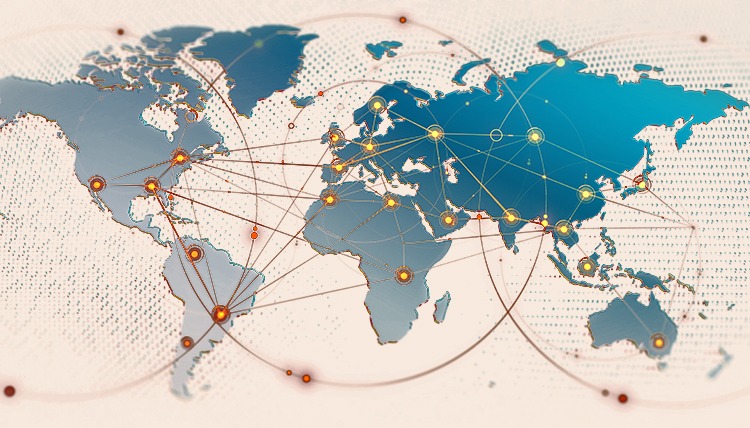Supply Chains: Trends in Chemical Distribution
Distributors of chemicals, pharma ingredients, and other materials used in bio/pharma development and manufacturing play a crucial role. With increased product and supply chain complexity, DCAT Value Chain Insights examines the key trends and issues impacting markets and supply chains.
By Patricia Van Arnum, Editorial Director, DCAT, pvanarnum@dcat.org
Market size and top chemical distributors
Chemical distribution encompasses a wide scope of products, markets, and industries. Essential raw materials are produced and supplied by the chemical industry to businesses in manufacturing and industrial sectors. These raw materials are either sold directly by producers or distributed to end users by outside distributors. Due to the outsourcing of value-added services, such as logistics, packaging, blending, waste removal, inventory management, and technical training, the distribution of commodity and specialty chemicals by third parties is predicted to grow more than the sale of products directly to end users, according to a recent analysis by Grand View Research, a San Francisco, California-based business intelligence firm.
The global chemical distribution market was valued at $256.6 billion in 2023 and is anticipated to grow at a compound annual growth rate of 6.3% from 2024 to 2030, according to Grand View Research. The demand for the chemical distribution is projected to be driven by rising chemical consumption in a variety of end-use industries, including pharmaceuticals, construction, polymers & resins, and plastics.
In looking at the top global chemical distributors, its annual analysis of the top 100 chemical distributor, ICIS (Independent Commodity Intelligence Services) identifies Germany-based Brenntag as the top distributor with $18.6 billion in 2023 sales, followed by US-based Univar Solutions at $11.5 billion, US-based Tricon Energy at $10.6 billion, Japan-based Nagase & Co at $6.5 billion, and Netherlands-based IMCD at $5.1 billion. The regional leaders are Brenntag (Europe), Univar Solutions (North America), Nagase & Co (Asia Pacific), and Tricon Energy (Latin America / Middle East & Africa). The ICIS Top 100 Chemical Distributors ranking is based on 2023 sales and year-end 2023 currency exchange rates.
The ICIS Top 100 Chemical Distributors was compiled with the support of several industry associations representing chemical distributors: the European Association of Chemical Distributors, the US-based Alliance for Chemical Distribution, (formerly the National Association of Chemical Distributors), Associquim (the Brazilian Association of Chemical and Petrochemical Distributors), Responsible Distribution Canada), UK-based Chemical Business Association, and Netherlands-based International Chemical Trade Association.
Pharma ingredient supply lines
Raw materials, chemicals, and related inputs used in pharmaceutical production represent just one segment in the global chemical distribution market. In looking at broader issues impacting pharmaceutical supply chains and related inputs, a key issue potentially impacting pharm ingredient supply chains in the Europe Union (EU) relates to policy moves to increase manufacturing in the EU and reduce dependence on other countries for active pharmaceutical ingredients (APIs) and related inputs for critical medicines. Earlier this year (April 2024), the European Commission launched the Critical Medicines Alliance. First announced by the European Commission in October 2023, the Alliance will focus on industrial policy and complements the reform of the EU’s pharmaceutical legislation as proposed by the European Commission. Set up as a consultative mechanism to policy-makers, the Alliance seeks to work to enhance security of supply, strengthen availability of medicines, and reduce EU supply-chain dependencies. The recommendations made by the Alliance will serve as a basis for a multi-year strategic plan containing milestones and corresponding deadlines for their implementation.
Key factors being analyzed include an over-dependency on a limited number of external suppliers, limited diversification possibilities, and limited production capacities. This will build on the European Commission’s vulnerability analysis of supply-chain bottlenecks of critical medicines on the Union list of critical medicines. The Union list of critical medicines, which was published by the European Medicines Agency last December (December 2023), refers to a list of critical medicines for the EU/European Economic Area, which contains more than 200 active substances of medicines considered critical for healthcare systems across the EU/European Economic Area, for which continuity of supply is a priority and for which shortages should be avoided. The list contains active substances of innovator and generic drugs covering a wide range of therapeutic areas and includes vaccines and medicines for rare diseases. It reflects the outcome of a review of 600 active substances taken from six national lists of critical medicines. The goal is update that list on an annual basis.
The European Commission carried out an analysis of supply-chain vulnerabilities for a first tranche of 11 critical medicines on the Union list, published in April 2024. The outcome of this work will inform the scope of the mandate of the Critical Medicines Alliance. In addition, the European Commission will proceed with evaluating the remaining medicines in the Union list. It will then recommend priority actions for the near future and propose new tools to address the challenges it has identified. In particular, the recommendations will focus on mitigating structural risks, reinforcing supply by making demand more predictable, encouraging diversification, and boosting manufacturing in the EU.
Those efforts will also be part of discussions in the Alliance, which will help the European Commission to identify what it terms as “pipeline investment projects,” which could benefit from EU and national funding to strengthen manufacturing in the EU. The Alliance will also look at how market incentives, such as capacity reservation contracts and joint procurement, can be used to enhance security of supply of critical medicines. In addition, the Alliance is taking a holistic view of the supply chain, and its members will seek to identify new synergies to work with each other more effectively, including creating new partnerships. Given the global nature of the supply chain, these new partnerships could bring the diversification of the supply chain of critical medicines.
The European Chemical Industry Council (Cefic), which represents EU chemical manufacturers, is a member of the Critical Medicines Alliances, and through its sector group, the European Fine Chemicals Group (EFCG), supports potential policy moves to advance fine chemical manufacturing in the EU.
Cefic’s EFCG issued a set of recommendations last November (November 2023), which included fostering supportive legislative policies for EU API manufacturers that emphasized sustainable growth and reshoring initiatives while investing in innovation and shifting procurement focus on supply security and social-environmental standards. In making those recommendations, EFCG pointed to the continued decline of European-based API production with respect to the supply of critical medicines. From a global production share of 53% in 2000, the EU’s share of API production in 2020 fell to 25% due to increased competition from lower-cost countries and EU pricing and procurement policies not favorable to EU-based domestic manufacturing, according to information from EFCG.




